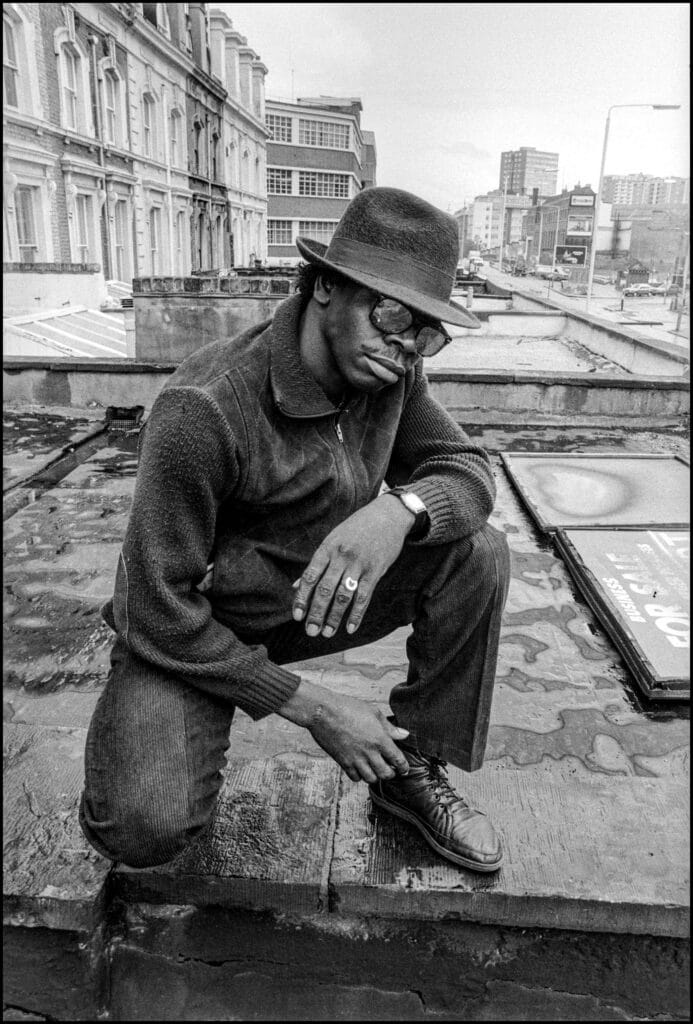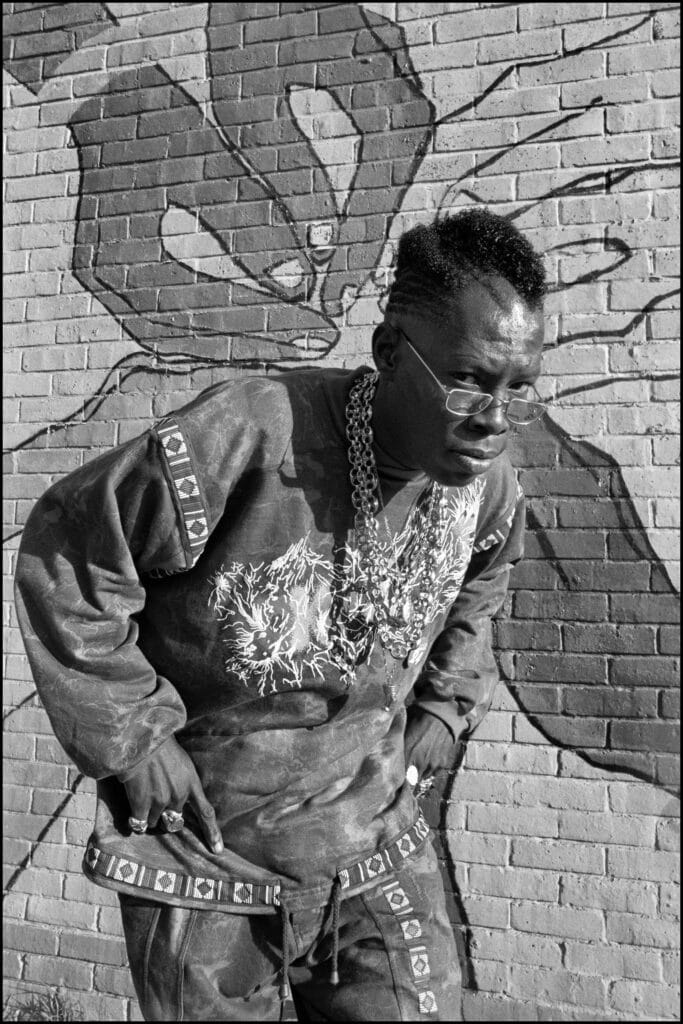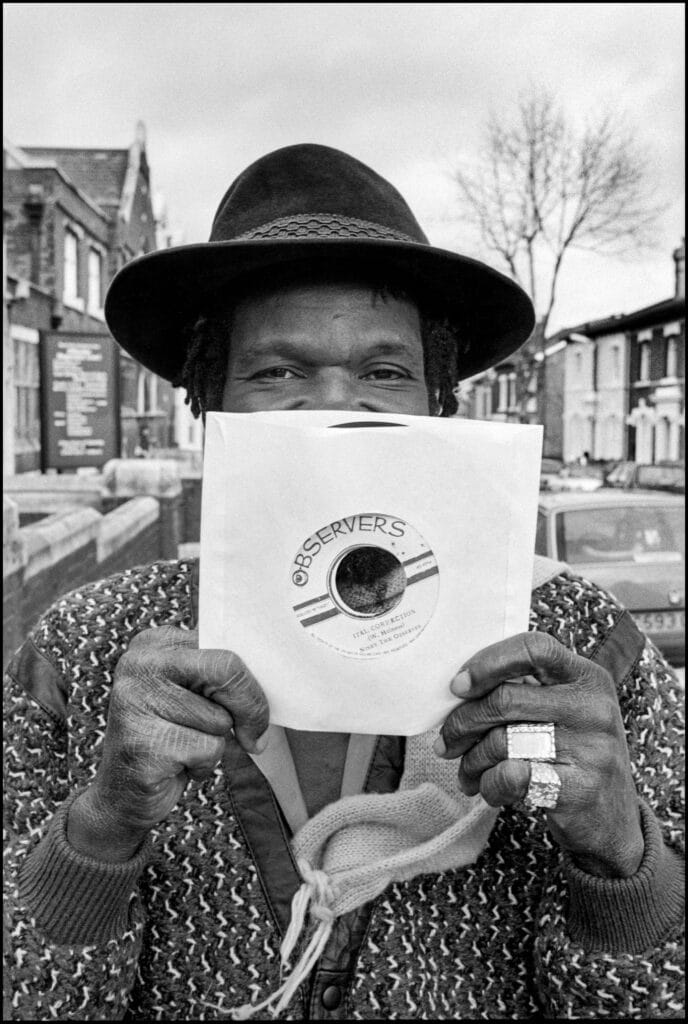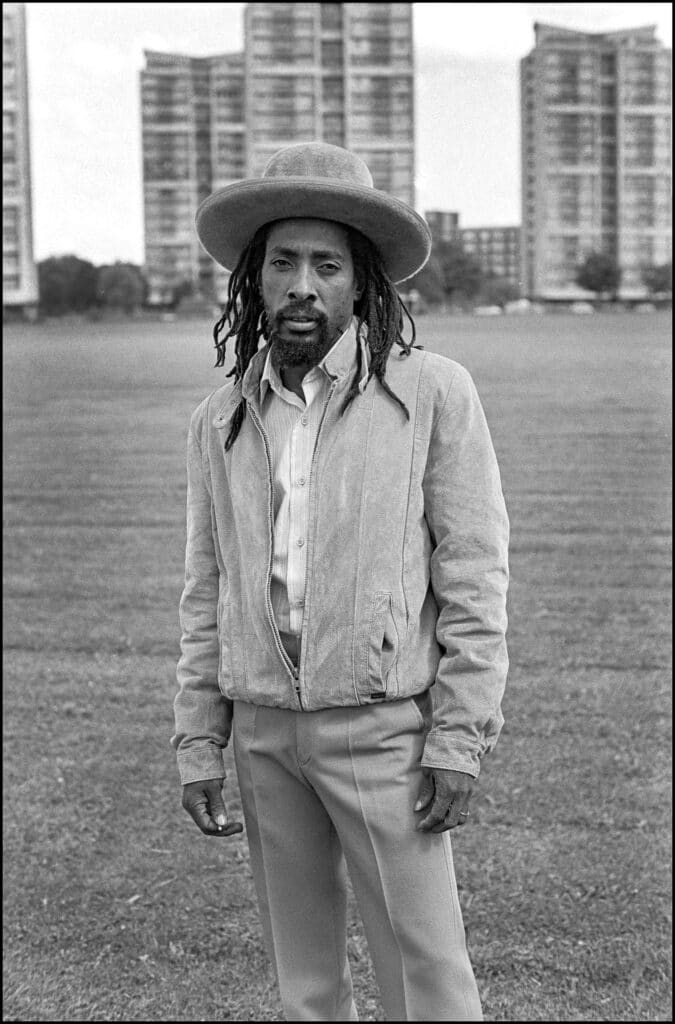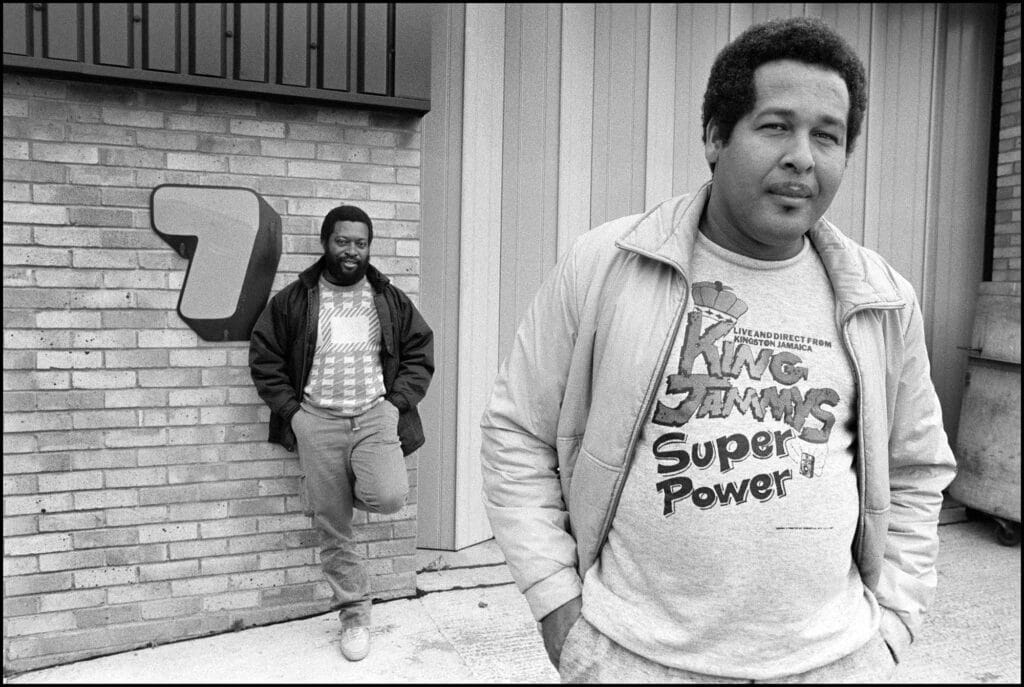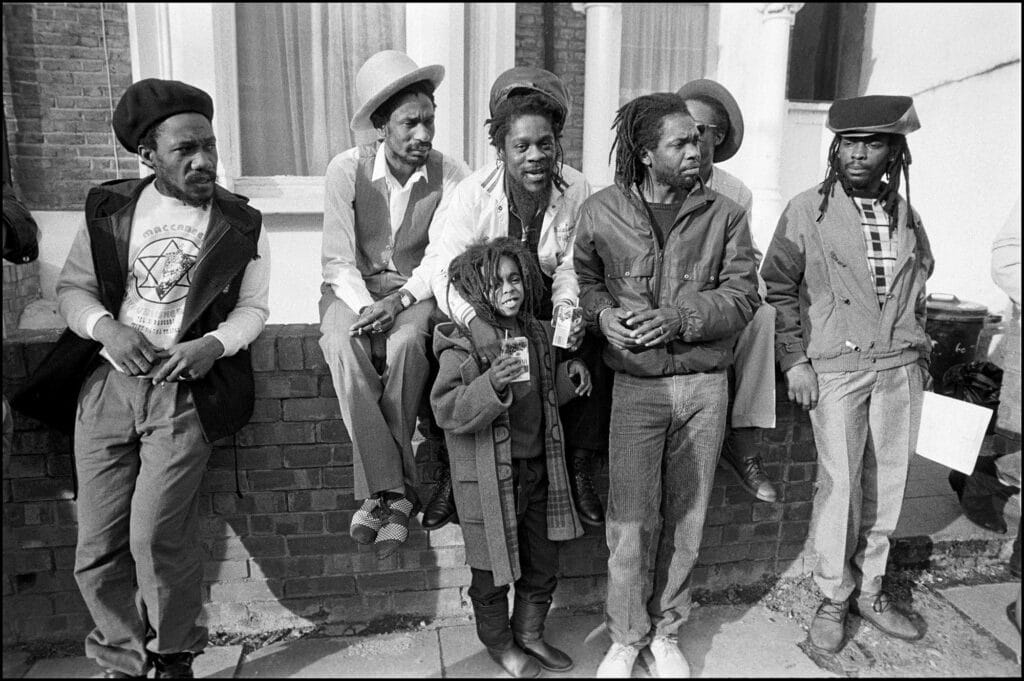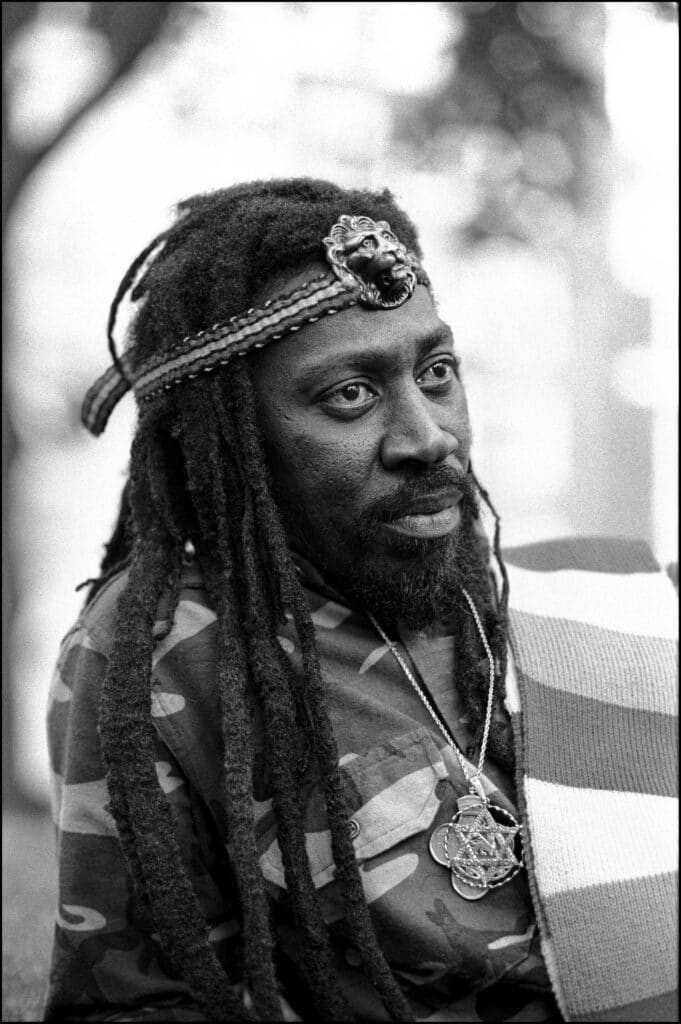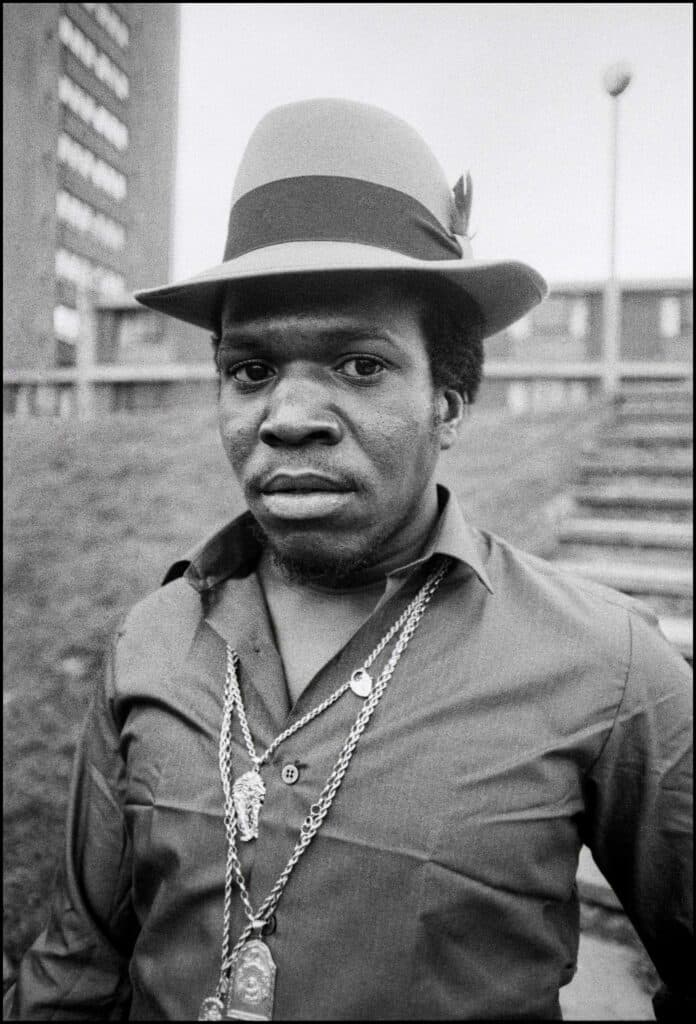By the late 1970s, rebel music became the voice of the British working class, speaking truth to power against a tattered landscape of racism, discrimination, disenfranchisement, and riots in the UK. As the final vestiges of empire collapsed, fascism reemerged in the form of the National Front, which targeted Afro Caribbean and Southeast Asian émigrés and their families, who helped rebuild the shattered nation following World War II.
Rebel music gave disempowered youth a voice in a world that offered them no future, moving through the underground and becoming a force that would come to define the times and generations to come. From reggae, roots, and dub to rockabilly, 2Tone, and punk, music became a force for confrontation and change with movements like Rock Against Racism.
In 1978 British photographer David Corio, then 18, arrived in London, fresh out of Gloucestershire College of Art and Design and ready to launch his photography career. He got his start shooting concerts for New Musical Express, covering four or five shows a week with headliners like George Clinton, Grace Jones, and the Slits. To call it a stellar era would be an understatement.
In 1980, Corio photographed Bob Marley at the Crystal Palace Bowl, during his last London concert just ten months before his death. “He was constantly flashing his locks, and raising an arm to point to the sky. He seemed to be in an almost hypnotic state,” Corio told Vikki Tobak for Contact High.
Corio’s iconic portrait of Bob Marley, which appears on the cover of the forthcoming reprint of The Black Chord, is emblematic of photographer’s gift for capturing the transcendental spirit of music in the photograph, no small order for a medium both still and silent.
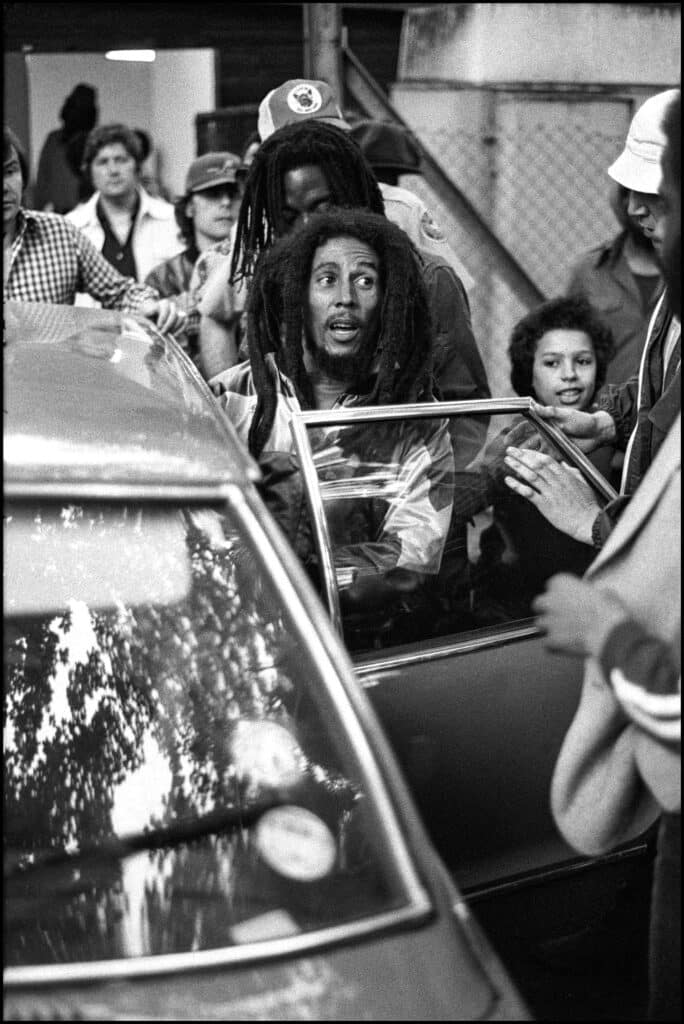
Here I come
With his untimely death, Bob Marley passed from the earth just as rebel music was reaching global heights, connecting London, New York, and Toronto with the culture’s beating heart in Kingston. It was a time of tremendous change, and the music reflected the times with the rise of dancehall.
David Corio was perfectly poised to document the continuous evolution of the scene over the course of a quarter of a century, which he revisits in Reggae in London 1980–2004. Corio’s black and white portraits provide a revelatory look at singers, musicians, and producers like Lee ‘Scratch’ Perry, Bunny Wailer, Dennis Brown, Barrington Levy, and Shabba Ranks who have continuously redefined the landscape of music, style, and nightlife for decades.
For Reggae in London, Corio blends icons like Gregory Isaacs, Horace Andy, and Augustus Pablo with UK artists like Janet Kay, Smiley Culture, and Tippa Irie. The book also includes a wide selection of lesser-seen artists like Niney, Prince Lincoln Thompson and Fabien Miranda, offering a glimpse of an archive whose expanse has yet to be revealed in depth.
The photographs are shot on location across London, rather than backstage or in a studio, creating a sense of intimacy and connection that feels warm and familiar, like old friends meeting along the way through life. The encounters happen just as you happen along the Shepherd’s Bush, Notting Hill, Kensington, Ladbroke Grove, and Brixton. Here in these passing moments Corio has crafted a portrait of the culture that is at once divine and down to earth, the artists becoming the living essence of the music made flesh.
Reggae in London 1980–2004 is published by Café Royal Books, £6.70. The Black Chord co-authoredd with Vivien Goldman will be published in 2024 by Hat & Beard Press. Framing the Beat: 45 Years of Music Photography by David Corio is on view through January 6, 2024, at Elliott Gallery in Amsterdam.

